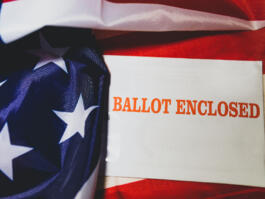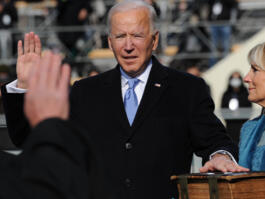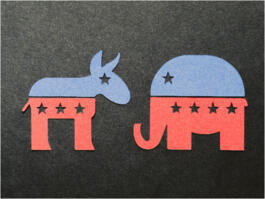Election Integrity: 50% Think Cheating Likely in Midterms
Many voters still believe cheating affected the 2020 presidential election, and a majority fear the upcoming midterm elections could be tainted by cheating.

Many voters still believe cheating affected the 2020 presidential election, and a majority fear the upcoming midterm elections could be tainted by cheating.

While online dating has grown in popularity, less than a third of Americans have a favorable opinion of dating apps.

By an overwhelming margin, voters don’t want President Joe Biden to seek reelection, and they’re not excited about two possible alternatives in 2024, either.

This Fourth of July, watching people fight over what the Constitution means, I ask people, if you could change the Constitution, what would you change?

The past six months have seen a dramatic increase in gasoline prices, most Americans expect the cost to continue rising.

Here's an amazing but true statistic. After more than a decade of declining carbon emissions here in the United States, in 2021, President Joe Biden's first year in office, emissions rose.

Eighteen percent (18%) of Likely U.S. Voters think the country is heading in the right direction, according to a new Rasmussen Reports national telephone and online survey for the week ending June 30, 2022.

More than ever, Americans this Fourth of July think the Founding Fathers would be disappointed in the nation they established 246 years ago.

In surveys last week, this is what America told Rasmussen Reports...

When tracking President Biden’s job approval on a daily basis, people sometimes get so caught up in the day-to-day fluctuations that they miss the bigger picture...

The 2022 midterm elections are now 130 days away, and Republicans have a five-point lead in their bid to recapture control of Congress.

DEI -- "diversity, equity and inclusion." University administrators, corporate human resources facilitators and politicians of a liberal stripe all assure us that America is now, suddenly, for the first time in history, a nation of diversity, equity and inclusion .

Consumer fireworks sales are skyrocketing, and most Americans enjoy the fun of shooting their own fireworks.

Illegal immigration will be an important issue in the midterm elections, according to most voters, who say the problem is getting worse.

Before we get to our takeaways from yesterday’s primaries, a quick pit stop in the Ocean State is in order.

Most voters expect crime to be an important issue in the midterm elections, and President Joe Biden’s approval on the issue has declined.

Now abortion law is up to states. Some will ban it, while most blue states will allow it in some form.

The Rasmussen Reports Immigration Index for the week of June 19-23, 2022, increased to 90.2, up more than one point from 88.4 two weeks earlier.

Even though more voters identify as pro-choice than pro-life, full half of them approve of the recent Supreme Court ruling that overturned the 1973 Roe v. Wade decision.

Joe Biden has become America's "it's not my fault" president. Whether it's the inflation, the border, the crime, the gas prices, the Afghanistan exit fiasco or the stock market collapse, Biden has become an expert at pointing the finger at someone else.